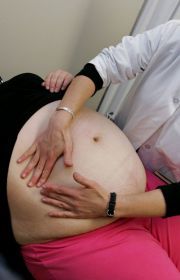Low Vitamin D Levels in Pregnancy Linked to Increased Gestational Diabetes Risk
New study results suggest low levels of vitamin during the first trimester are a modest yet consistent and independent risk factor for developing gestational diabetes and are associated with insulin resistance at the second trimester.

Gestational diabetes mellitus (GDM) appears to be the manifestation of a progressive increase in insulin resistance during pregnancy that presents risks for the mother and unborn child. While some researchers believe vitamin D is involved in glucose homeostasis and its deficiency contributes to abnormal glycemic regulation in pregnancy, the vitamin’s role in GDM is still controversial.
The February 2014 online issue of Acta Diabetologica included a study that investigated the GDM-vitamin D connection. A group of researchers from Canada tested the associations between first trimester 25-hydroxyvitamin D (25OHD) levels and the risk of GDM development by measuring insulin resistance (HOMA-IR), insulin sensitivity (Matsuda index), beta cell function (HOMA-B), and beta cell compensation (ISSI-2) in a cohort of 655 newly pregnant women.
Between weeks 6 and 13, the researchers gathered the subjects’ blood samples and measured 25OHD levels. They repeated the blood work in the second trimesters between weeks 24 and 28, and they also measured glucose and insulin 3 times during an oral glucose tolerance test to estimate HOMA-IR, HOMA-B, Matsuda index, ISSI-2, and insulin secretion.
According to the authors, 8.2% of the participants developed GDM in the study period. Those who had lower first trimester 25OHD were at elevated risk for GDM, even after adjusting confounding factors, such as sunlight exposure and vitamin D intake, and other GDM risk factors, such as weight and ethnic background. In fact, each standard deviation of decline in 25OHD level was associated with 1.48 times the risk of GDM. Additionally, women with lower first trimester 25OHD levels tended to have higher HOMA-IR, lower Matsuda index, and reduced ISSI-2.
The researchers translated their results to suggest low levels of 25OHD during the first trimester are a modest yet consistent and independent risk factor for developing GDM and are associated with insulin resistance at the second trimester.